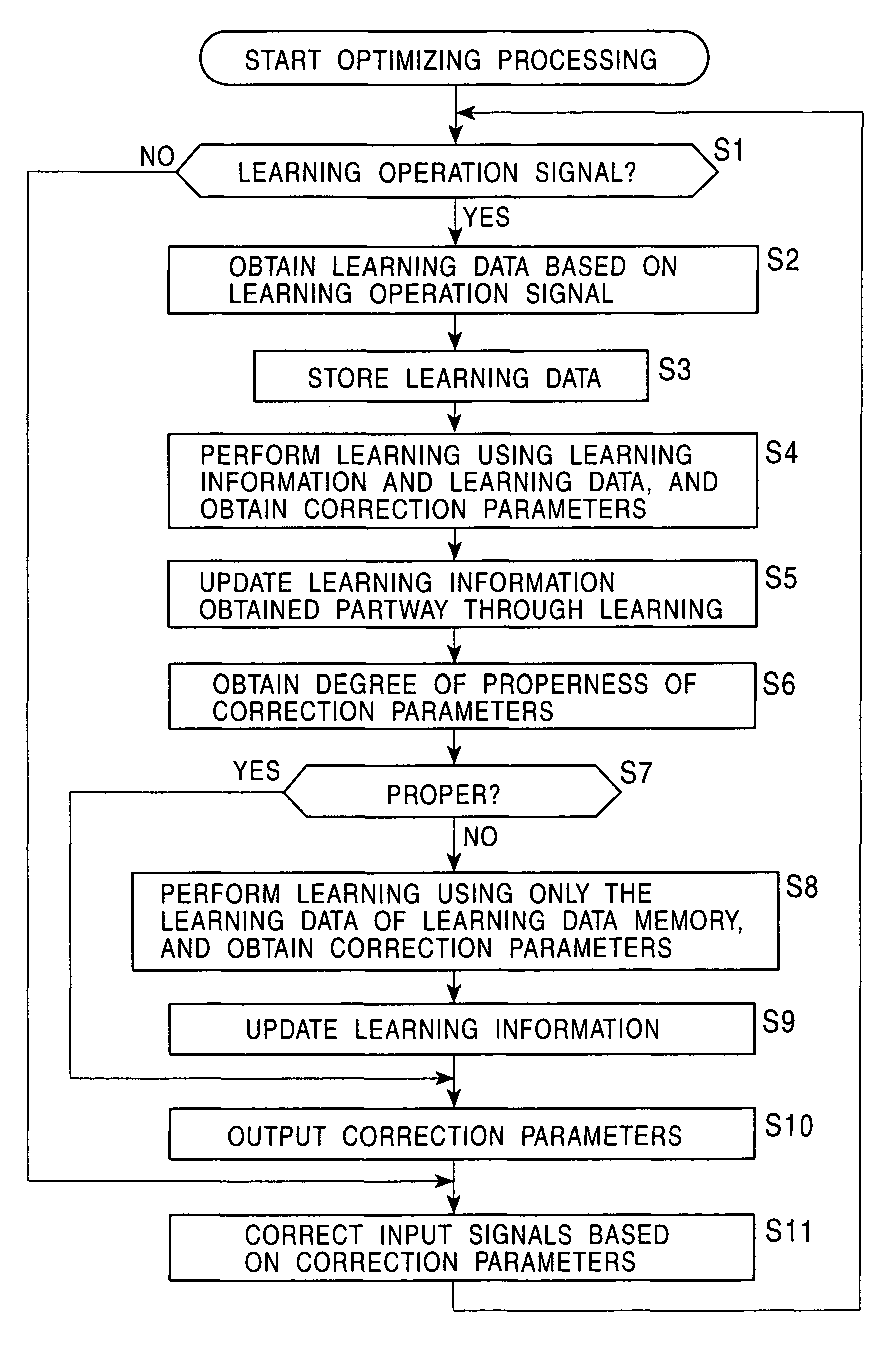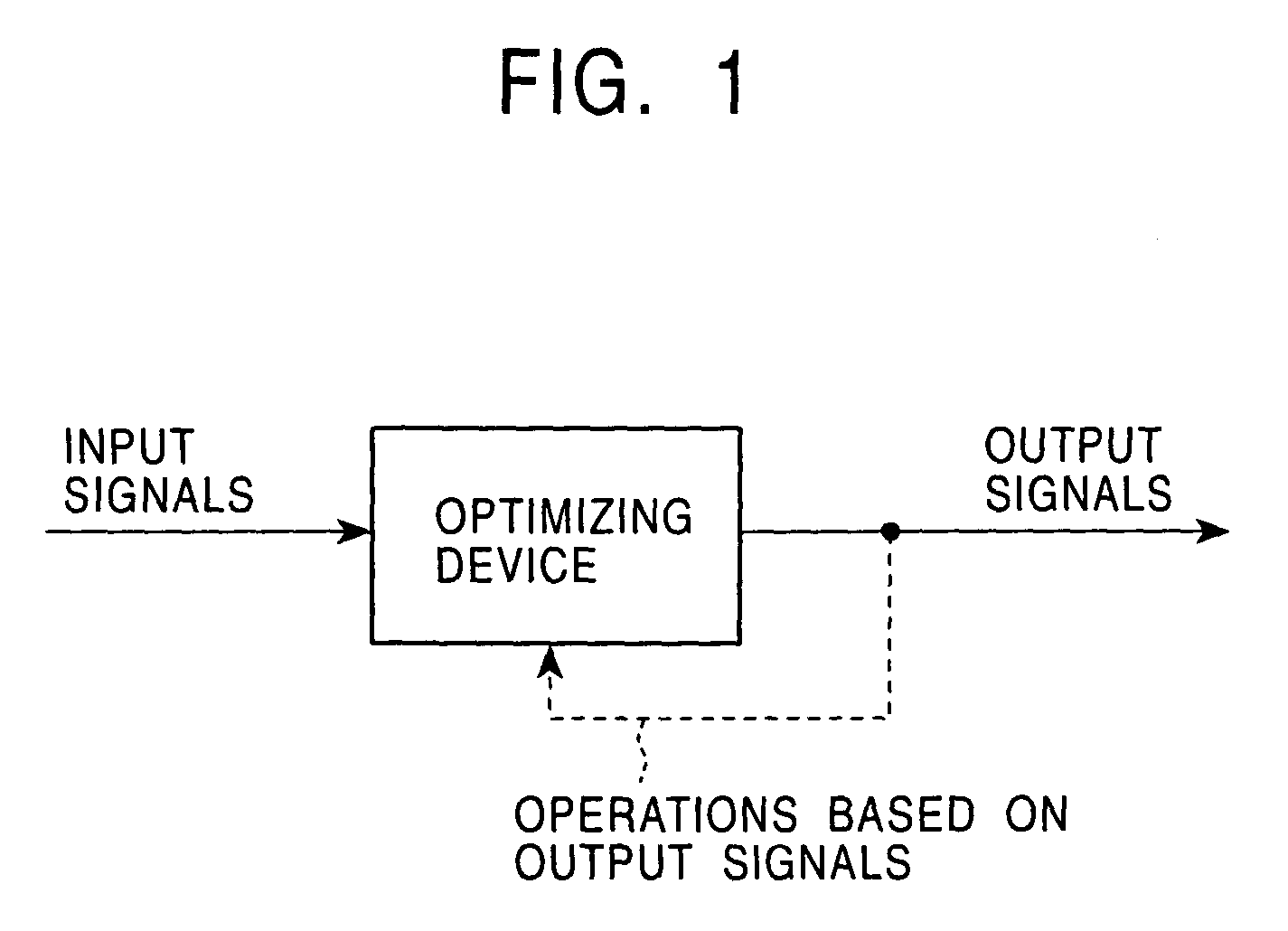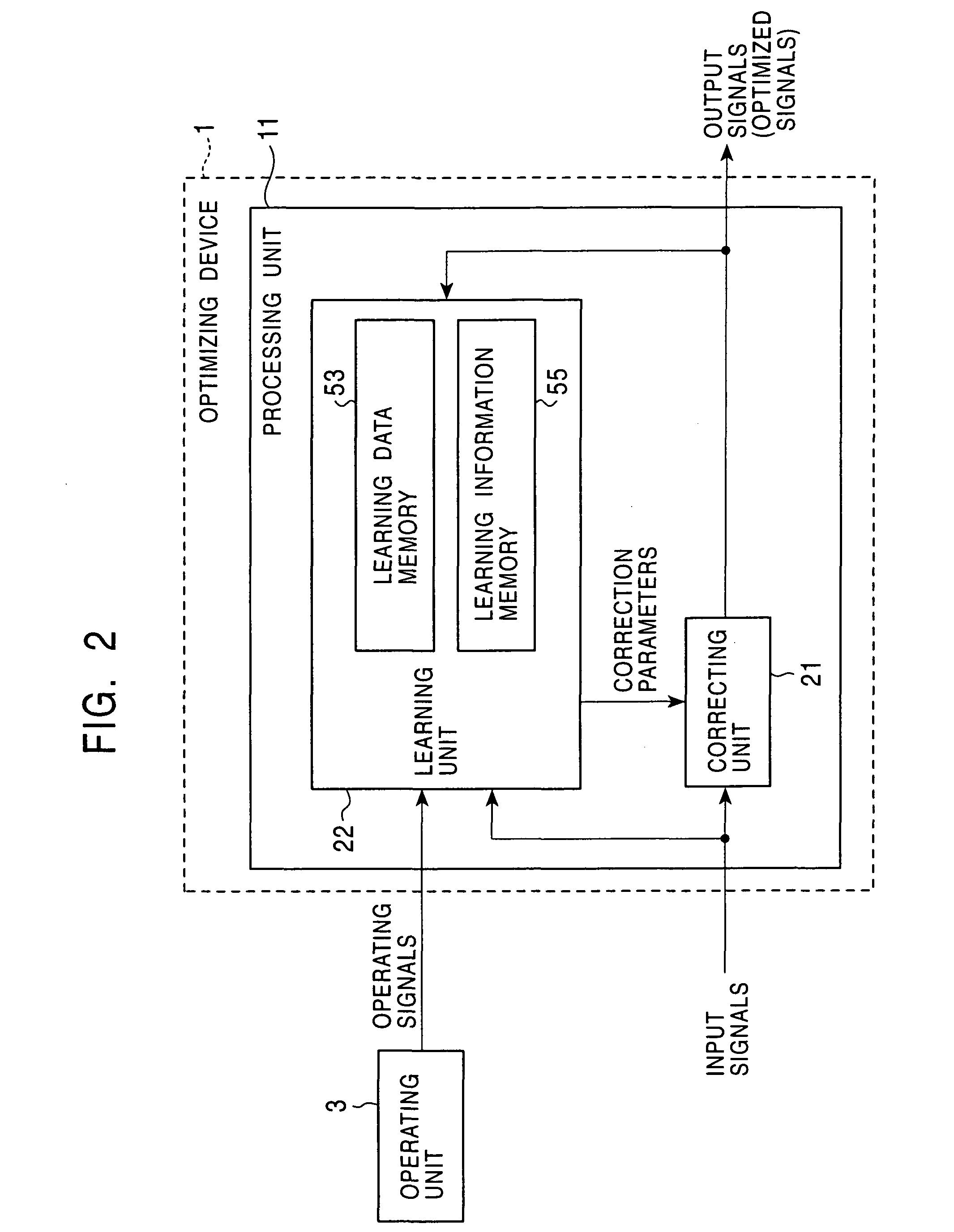Signal processing device and method which learn a prediction coefficient by least-Nth-power error minimization of student teacher data error to detect a telop within image signals which are input signals by selectively outputting input signals following decision of the processing deciding means
a signal processing and prediction coefficient technology, applied in the field of signal processing devices, can solve problems such as affecting the processing efficiency of image signals, and achieve the effect of changing the processing structur
- Summary
- Abstract
- Description
- Claims
- Application Information
AI Technical Summary
Benefits of technology
Problems solved by technology
Method used
Image
Examples
Embodiment Construction
[0171]FIG. 1 illustrates a configuration example of an embodiment of an optimizing device to which the present invention has been applied. Following executing predetermined processing with regard to input signals (signal processing), the optimizing device outputs signals obtained as the results of the processing, as output signals. The user examines (qualitatively evaluates) the output signals, and in the event that the output signals do not match personal preferences, inputs operating signals corresponding to the preferences of the user, to the optimizing device. The optimizing device changes the contents of processing and structure of processing based on the operating signals, subjects the input signals to the predetermined processing again, and outputs the output signals. The optimizing device subjects the input signals to optimal processing (processing which is optimal for the user) while repeating changing the contents of the processing and structure of processing corresponding...
PUM
 Login to View More
Login to View More Abstract
Description
Claims
Application Information
 Login to View More
Login to View More - R&D
- Intellectual Property
- Life Sciences
- Materials
- Tech Scout
- Unparalleled Data Quality
- Higher Quality Content
- 60% Fewer Hallucinations
Browse by: Latest US Patents, China's latest patents, Technical Efficacy Thesaurus, Application Domain, Technology Topic, Popular Technical Reports.
© 2025 PatSnap. All rights reserved.Legal|Privacy policy|Modern Slavery Act Transparency Statement|Sitemap|About US| Contact US: help@patsnap.com



